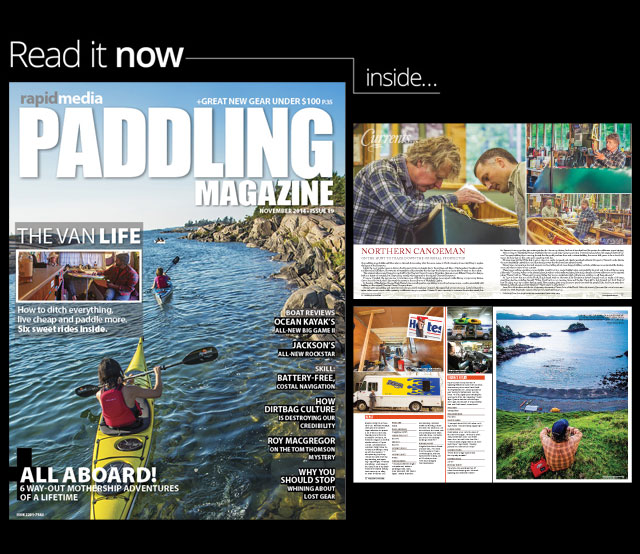As a paddler, canoe builder and filmmaker on the road documenting what the canoe means to North America, it was only fitting to explore the legacy of the Prospector.
Likely the most popular canoe in history, the Prospector’s fame is largely due to the writings and films of the legendary Canadian author and filmmaker Bill Mason. However it’s its versatility and functionality that has kept the Prospector a classic after 90 years on the market.
The original cedar-canvas Prospector was built by the Chestnut Canoe Company. Nowadays, there are many different Prospector designs, built in a variety of materials, but I kept asking myself, what happened to the original Chestnut Prospector?
It was as I traveled this past summer to interview some of North America’s leading canoe experts while filming my upcoming feature, Canoe: Icon of the North, that I discovered the answer in the small town of Wakefield, Quebec.
In the shop of Headwaters Canoes, Hugh Stewart runs a small operation specializing in wood and canvas canoes and still manufactures the original Chestnut design today.
Stewart grew up paddling and spent his summers as a youth exploring Ontario’s Algonquin Park at summer camp. Later he learned to repair cedar-canvas canoes while operating a wilderness camp in northern Ontario. It was a necessity to maintain the wooden vessels, but for Stewart, it was more than just routine patchwork—he was combining his love of woodcraft and his passion for wilderness canoe tripping.
After moving to Wakefield, Stewart established his own small cedar-canvas canoe shop. It seemed natural when the original Chestnut Canoe Company building forms came up for sale that he would purchase them and continue building the canoes he’d grown to be so fond of. It was in his shop that my film crew and I caught up with him.
I’d never expected that I’d be able to get so close to a newly canvassed and cleanly varnished authentic Prospector. Stewart’s works feature the same beautifully crafted forms and functional prowess that the boats have always boasted.
Stewart was a very gracious host and we spent our time talking about canoe design, building methods, wilderness canoe travel, skills development and what it means to be a canoeist.
There was something special as a canoe builder myself to sit in a master builder’s shop surrounded by his work and tools and discuss canoe philosophy. “Canoeing strikes on the physical plane, it strikes on the intellectual plane, historical, cultural and it even affects you on the spiritual plane,” Stewart told me. “There aren’t many activities that you can undertake which will give you nutrition on all these elements.”
As I got to know this icon of the North, Hugh shared with me that even if his Prospectors haven’t changed much in nearly a 100 years, everything else has, including himself. “When I look back on my canoeing times and the few I have left to look forward to, I don’t think of how I’m going to go up or down that big rapid. Now canoeing gives me a chance to spend time with the people I like. And to get away from television, Internet, cars, and the telephone—that’s what I’m attracted to.”
Jason Eke is the producer and director of upcoming documentary Canoe: Icon of the North. Follow the travels of Jason and his crew at www.canoemovie.com. Visit Headwaters Canoes online at www.headwaterscanoes.ca.



